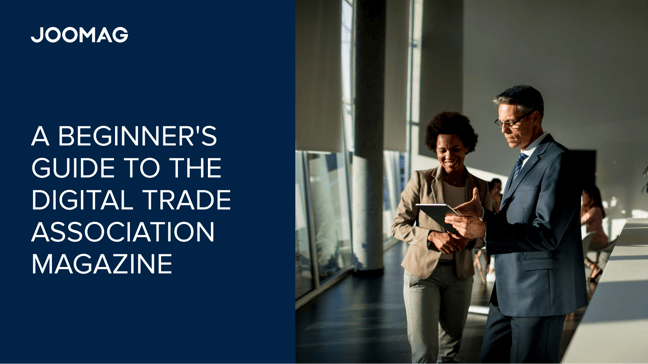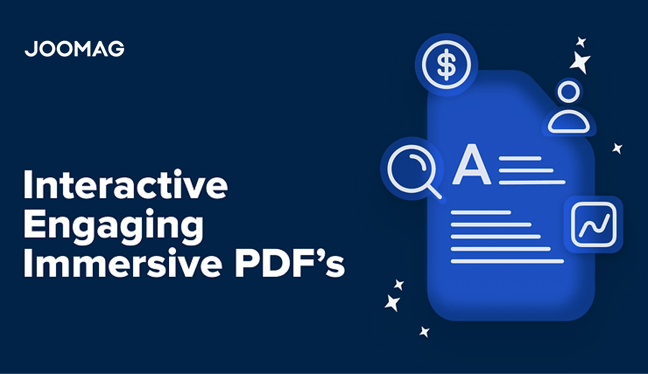
Sometimes, keeping secrets does more harm than good. In that regard, we decided to spill the beans about the 3 best-kept digital publishing secrets your competitors may already know about! So read on, leverage your content for more publishing success, and gain the upper hand.
1. Going Multiplatform: Expand Your Digital Reach
You finished creating an online publication with Joomag. Fantastic, but it’s not really finished. A lot of our publishers overlook a critical next step: maximizing distribution of their content with a multiplatform approach. In most cases, their competitors have already done so. That’s why you need to take the extra steps to ensure your publications can be accessed from every major platform and device.
We’re going to let you in on a little secret. Going multiplatform with your publication means its content needs to be “smart” first. Smart content…
-
-
Has good structure, is adaptable, and contains textually rich content. If these requirements are met, then the content can be easily translated across multiple custom configurations (like apps).
-
Receives its own special attention for every platform its delivered on. Navigational features, resolution, and many other factors need to be considered here. But this doesn’t mean you should have several different versions of the same content. Your original content source should be your main focus.
-
Has simple delivery specifications so that, for example, an app for it can be created without any problems.
-
If you’re not big on or familiar with mobile apps, don’t worry— Joomag has you covered. We’ll do the legwork and can build custom iOS and Android apps for you. You can fortify your multiplatform strategy further by selling your publications in both digital and print formats right from our platform.
2. Recycle
One of the biggest kept secrets in the digital publishing industry is “going green” with your content. By going green, we mean recycling your content and repurposing it in ways that will drive more traffic while saving you time and effort. Some creative ways you can do so are by:
-
-
Updating old content.
Digital content can be updated in real-time. Remember that awesome, traffic-generating publication you put together a while ago? Look at it now. Could it use some editing? Here’s the trick: don’t update and publish it as an entirely new publication. Instead, revise its existing content under its same URL (to retain its SEO value) and re-promote it. This will save you precious time AND garner fresh new clicks for your content.
-
Getting inspired by your other content.
Take an analytical approach here and consider your other digital media. If you’ve written a series of blog posts and they share a common theme, bundle them together into a full-fledged publication. It works the other way, too; take snippets of content from your eBook or digital magazine, expand upon them with new information, and re-purpose them into separate blog posts.
-
3. Price properly: Find the Sweet Spot for Digital Publications
It’s a surprising hurdle many online publishers struggle to overcome: setting the right price for a publication. Well, we’ve got some bad and good news. The bad? There’s no one-size-fits-all answer for suitably pricing your content. The good? We can offer you the following advice based off our publishers’ experiences and feedback:
-
-
Generally, digital publications cost less than print.
-
People expect shorter content to be priced cheaper than lengthier ones.
-
For many digital publishers dipping their toes into selling, a safe initial price for eBooks is $2.99 USD.
-
Research! See how much other publishers in your genre are charging. Visit your competitors’ websites, online bookstores, newsstands—anything to help you pinpoint an appropriate pricing range.
-
Consider your overall goal. Do you want more money or more readers? Of course, the goal is to have both, but it’s much easier said than achieved. Charging a lower fee can help reel in new readers who are casually browsing for content. A higher price can deter potential readers and lead them straight into the arms of your competitors. Lower fees are better at encouraging impulse buying, but take note that lesser prices are also commonly associated with lesser quality.
-
Joomag lets you set the prices for your online publications whether you’re selling individual issues, hard copies, or subscriptions. Learn more about selling here
A secret’s worth and value depend, in part, on whom you tell it to. We hope you extract some value from the 3 above and knock your digital publications (and competitors) out of the park. And remember– you can always do so with Joomag.
FAQ
1. What does going multiplatform with digital publishing entail?
Going multiplatform means ensuring your publication is accessible on every major platform and device, involving smart content that's adaptable, textually rich, and easily translated across various configurations. Joomag assists by offering to create custom mobile apps for iOS and Android, enabling publishers to reach a wider audience by adapting their content for different digital mediums.
2. How can digital content be recycled for more traffic and efficiency?
Recycling digital content involves updating old publications under the same URL to retain SEO value and repurposing existing content into new formats, such as bundling blog posts into publications or turning publication snippets into blog posts. This strategy saves time and effort while generating fresh traffic.
3. What should be considered when pricing digital publications?
When pricing digital content, consider that digital publications generally cost less than print, shorter content should be priced lower, and initial eBook pricing can start around $2.99 USD. It's important to research competitors' prices and decide whether your goal is to maximize revenue or attract more readers, as lower prices can increase impulse buying but may also suggest lower quality. Joomag allows publishers to set their prices for various selling options.














